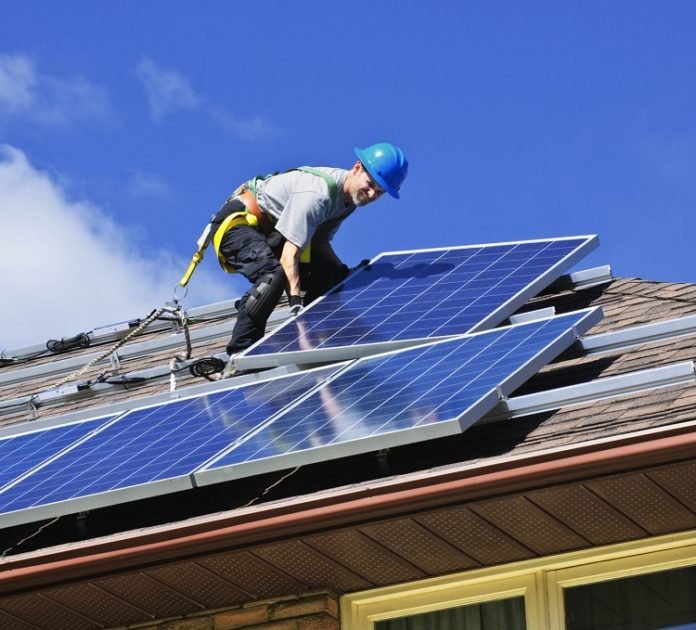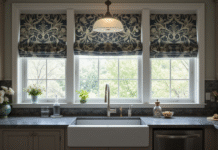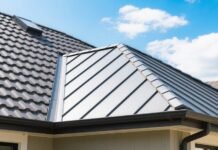Last Updated on August 18, 2022 by
More than 2 million homes in the United States will be using solar energy by 2023.
Solar panels are becoming popular because their cost is dropping due to innovations, tax credits, and tax breaks. In addition, more Americans have decided to reduce their carbon footprint by installing solar panels. As a result, these homeowners will increase their energy efficiency and reduce expenditure.
Not every roof will sustain your solar panels. Here is a guide on how you can determine the best roof for solar panels.
Table of Contents
Pitch and Orientation
The direction that your roof faces will determine the efficiency of your solar panels. Most solar panels in the United States have a southward orientation to increase power generation. That’s because the southern side experiences more hours of sunlight exposure than the other sides.
If your roof is facing West or East, it’ll get 20% less sunlight exposure than if it was facing South. Consequently, the best roof for solar panels should face South. If it is facing North, you may have to talk to a solar panel installation expert for more advice.
You also need to consider the pitch of the roof. This is how the roofing materials are arranged on your roof. Generally, the best roof has a slope of about 35 degrees.
Age
Solar panels continue to benefit from new innovations, but your roof’s age will still determine the efficiency of the solar panels. Some roofing materials such as shingles can be functional for two decades, while metal has a durability of up to 40 years. Therefore, metal is a better roofing material for solar panels because of its durability.
Shade
Solar panels can generate electricity even when it’s cloudy. However, their efficiency improves significantly when in direct sunlight. The best roof is the one that exposes the solar panels to as many hours of direct sunlight as possible.
If your roof has a lot of shade, you can talk to a roofing expert. They can suggest solutions such as uprooting trees and trimming branches. To contact them, you just have to search “solar panel Company near me.”
Size
The roof size will determine the type of solar panels and the amount of power generation. Since the typical solar panel generates 250 watts, you’ll need a larger roof to generate more energy. The recommended roof size is usually about 100 square feet for each kilowatt.
Having a large roof doesn’t necessarily mean that you’ll generate more electricity from your solar panels. The roof must be large and free of any obstacles such as skylights.
Material
Solar panels are compatible with several types of materials, but they are more efficient with few types of materials. Fortunately, you can easily change the materials on your roof if your budget allows. You have to choose a material that’s strong, durable, and easily removable.
Here are the main materials that you should consider.
1. Asphalt Shingles
Asphalt shingle is the most widely used roofing material in the country. They are popular because installing solar panels on roofs is easy and cheap. In addition, you can easily boost their strength and beauty with cellulose.
The primary benefit of asphalt shingles is that it’s available in many colors. However, it has a shorter lifespan and lacks strong insulation capabilities. Therefore, you can expect asphalt to support your solar panels for about two to three decades.
2. Clay Tile Roofs
Concrete and clay materials bring a unique and attractive texture to your roof. They have a long lifespan, are flat, and are cheaper than other roofing materials.
The main benefit of clay tiles is that they are non-combustible and can last for up to forty years. In addition, they have high insulation properties and can easily conserve energy. The main downside is that you’ll have to install extra framing to support the tiles.
3. Metal Roofing
Metal roofs can withstand storms, heavy rains, and strong winds. They come in several types, such as zinc, stainless steel, copper, and aluminum. You can choose metal roofs because they are durable, lightweight, and sleek.
A metal roof is the best roof material for solar panels because it reduces your carbon footprint. Moreover, it looks awesome on bungalows and most architectural styles. However, you have to be ready to spend a lot of money on metal roofs.
4. Slate
Slate is an elegant roofing material that’s available in many colors, such as purple, red, grey, green, and black. It’s resistant to fire, is recyclable, and long-lasting. You’ll have to get additional framing and expert installation if you want to use this type of roof for your solar panels.
Slate is one of the most expensive roofing materials, but it can serve your roof for more than 80 years. As a result, it’s one of the top materials for solar roofs.
5. Wood Roof Shingles
Wood has been the primary roofing material for several centuries, and it continues to be a popular choice today. It typically comes in elegant shades of grey, although you can get it in other colors. You can also buy specially-coated wood shingles that are fire-resistant.
Wood can support solar panels, although this may not be an ideal solution in areas with extreme weather conditions. The main benefit of wood is that it’s relatively cheaper and lasts for about three decades.
6. Rubber Roof Tiles
Synthetic roofing materials such as polymer and plastic have a unique texture and appearance. They are strong enough to withstand fire and extreme weather elements. You can use rubber roof tiles for your solar panels because they are cheaper and long-lasting.
Choose the Best Roof for Solar Panels
The efficiency, durability, and installation cost of your solar panels will depend on the type of roof. That is why you get the best roof for solar panels. Moreover, the roof should have the right shape, orientation, and pitch.
For more practical Home Improvement tips, please see our other blog posts.



























